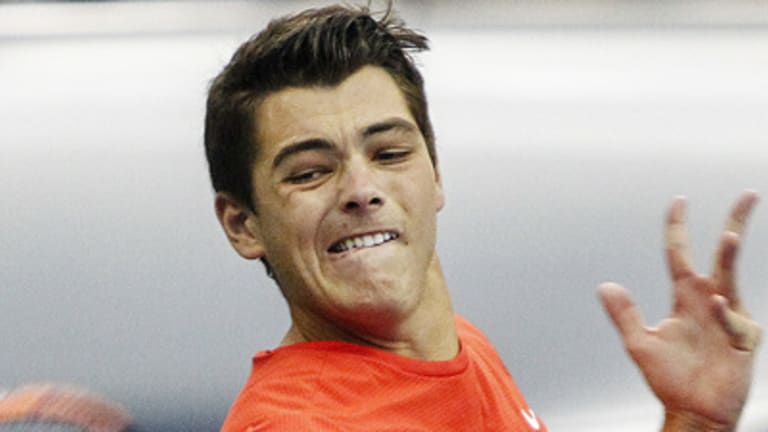Yet this week, the oft-injured Raonic announced that he has pulled out of his next event, in Delray Beach, with a torn adductor muscle; has his wave already crested? At the same time, we learned that Juan Martin del Potro would be starting his latest comeback in Delray. Seven years ago, del Potro made it clear that he was for real when he beat Federer in the U.S. Open final. Now, at 27, after enduring multiple season-ending wrist injuries, his name recalls a tennis future that, sadly, never came to pass.
Which brings us back to our latest tennis futures, Zverev and Fritz. There are plenty of reasons to believe that both will be stars: At 18, they’re already beating quality opponents; they have the requisite height for today’s game (Fritz is 6’4”, while Zverev is 6’6” and appears to be a little taller every time he plays); and each has tennis in his genes—Fritz’s mother, Kathy May, was a pro, as is Zverev’s bother, Mischa. And each has a very different type of star quality. Watching them play now, it’s easy to imagine a transatlantic rivalry between the hot-tempered, long-haired, gold-chain-wearing German and the cool, classically coiffed Californian.
Of course, this being a European era in tennis, it’s easier to imagine the German making it to the top. The 70th-ranked Zverev is further along in his development than the 145th-ranked Fritz. Zverev appears to have learned a thing or two from the straight-set lesson that Andy Murray gave him in Australia last month. So far in Rotterdam, Zverev has stayed focused, and he showed a fierce persistence, as well as physical toughness, in coming back from 2-4 down in the third against Simon. Zverev also has all the tools: the bailout serve, the controlling forehand, and, best of all, a smooth two-handed backhand that he uses as a third weapon.
By comparison, while Fritz has an aggressive mindset and his shots have a natural pop, he doesn't move or hit as smoothly as Zverev; so far he looks a little less polished. But Fritz has also shown a fierce persistence—he saved nine of 11 break points against Johnson—as well as a level head. That alone can take a teenager far.


